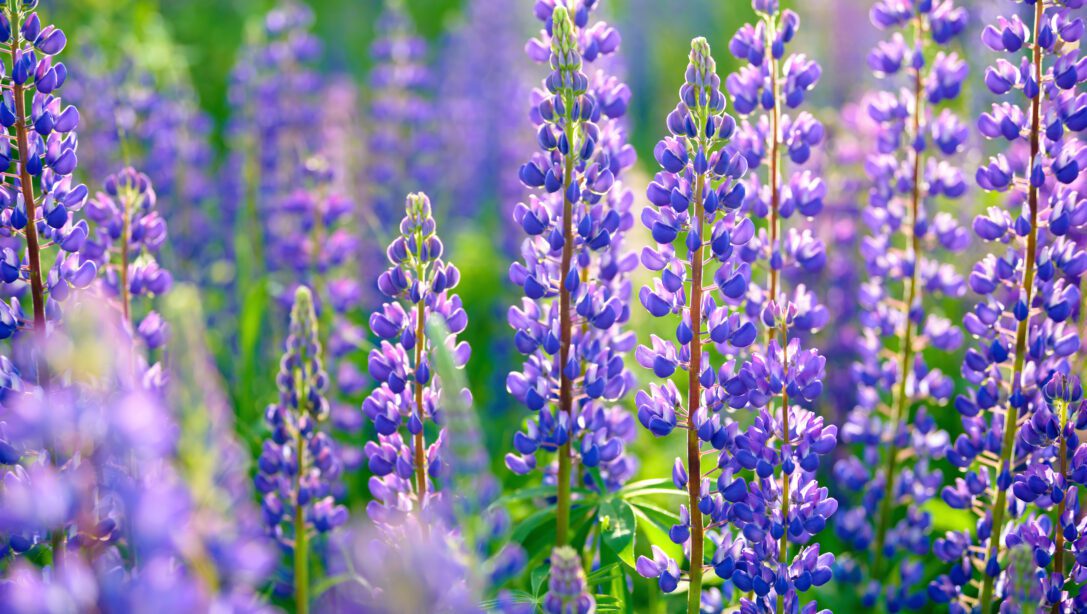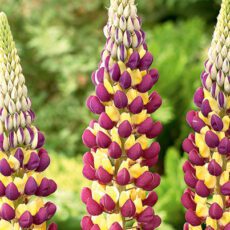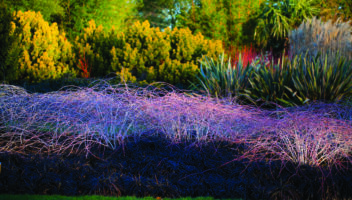Plants that bring height to borders are fantastic to help your eye appreciate your garden as a whole. We look at some of the best perennials to create stunning, visual spires.
View our collection of herbaceous perennialsOne of the key elements in designing a garden is a variation of height. When the eye is drawn upwards, the apparent size of the space extends. It is all too easy, as we are seduced by the stunning colours and forms of the herbaceous perennials we see, to end up planting a bed that is relatively low and flat. The result is that we look down, our field of vision is narrowed and elements of the garden are viewed alone rather than in the context of the wider planting or even the wider environment beyond the garden.
Height in the garden can be provided by trees and shrubs but the showy planting in between needs to also draw the eye upwards. This is always a consideration with Hillier Chelsea Flower Show gardens – we want to draw the eye up from the ground to appreciate the design as a whole as well as to marvel at the individual plants. Always in high demand at the show, and for our own gardens, are those perennials that throw up beautiful tall flower spikes, like fireworks or dreaming spires.
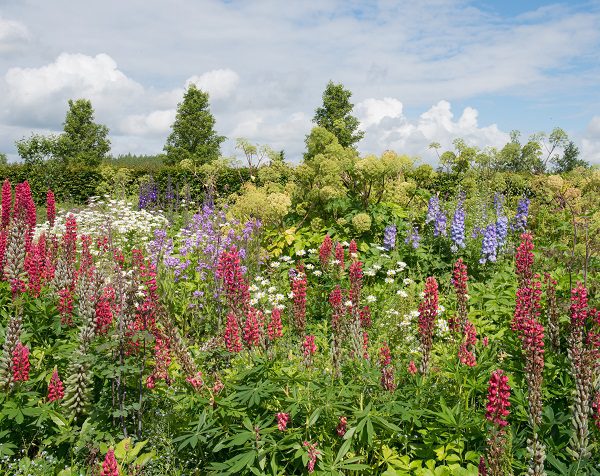
Adding Height with Delphiniums
Delphiniums are second only to roses in the nation’s list of favourite plants. It is easy to see why, with their spectacular tall flower spikes in shades of white, pink, purple and blue. The foliage is delicate and unassuming down low with the rest of your planting but the spikes, which can be up to a metre tall, are showy and impressive.
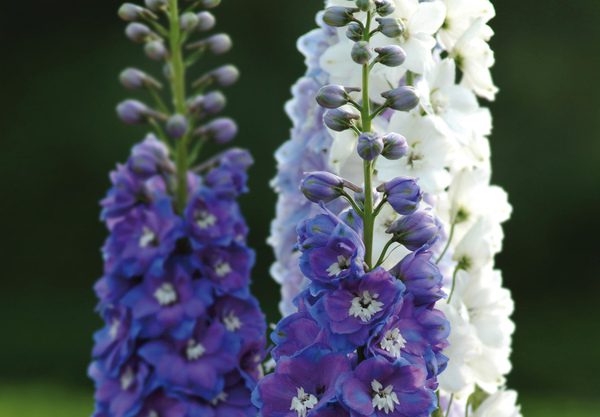
They are not always the easiest of plants to grow and do need some love and attention from the gardener. The spikes are so showy that they often need staking or other support to stop them going over in a light breeze. Herbaceous supports, such as those made by Tom Chambers are easy to push in place over your plants in early spring so the support is already in place when needed. Unseasonal weather, such as heavy rain or high winds, can still damage the spikes but in this case, cut back to a side shoot and they will often re-bloom. Do this with spent flowers too to extend the flowering season.
Adding Height with Lupinus
A staple of the early summer garden, lupins have attractive, architectural foliage, as well as strong, upright flower heads held firm on fleshy stems. With modern hybrids available in more or less any colour you can think of, including bi-colour varieties, there is an option for any colour scheme.
Lupins perform best in full sun but will tolerate a little shade, needing moist but well-drained soil. Cut back the spent flower-heads to encourage side shoots to bloom, but at the end of the season in August or September, the seed heads can be left in place as they are attractive in their own right. In the early part of the season, make sure to put down slug protection, as the foliage seems to be a favourite.
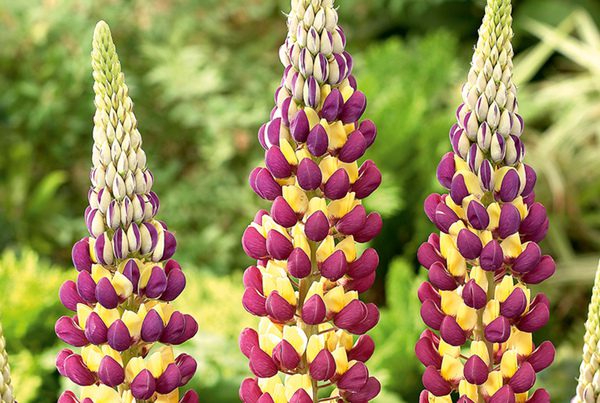
Lupins are in the Leguminosae plant family along with peas and beans – they “fix” nitrogen from the atmosphere and add it to the soil, so can very quickly thrive and grow into large clumps. The modern ‘West Country’ hybrids, such as L. ‘Manhattan Lights’ and L. ‘Persian Slipper’ are particularly vigorous – if they get too big, dig them up in early spring, divide the root ball and replant around the garden.
Plant tall with Aquilegias
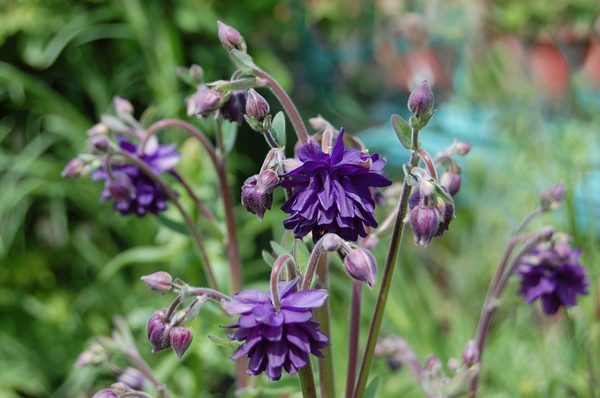
Aquilegias are the perfect choice in the cottage garden and the herbaceous border. Traditional varieties, such as A. ‘Nora Barlow’, are at home with lilacs, lavenders and roses in the quintessential English garden. The foliage typically lies hidden beneath the growth of the surrounding plants and the flowers pop up between like little jewels on long straight stems.
Many varieties of aquilegia will self seed and naturalise across your garden, which leads to a more mature looking garden. If you don’t want this to happen, you can dead head them to remove seed heads before they spread, or pull up seedlings when you discover them in the wrong place.
Plant Tall with Alliums
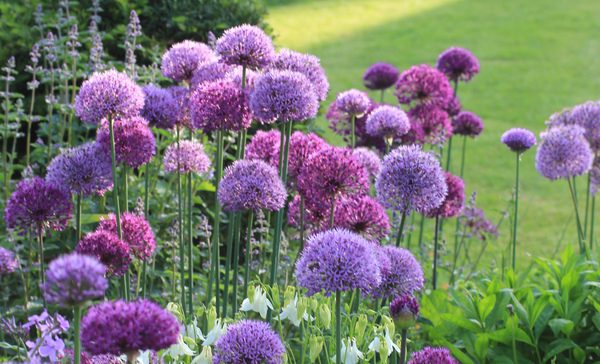
Mixed alliums in a border
Flowering in early summer, alliums shoot up like fireworks from clumps of strap like foliage. Plant the bulbs quite close together and not too deep. No deeper than the size of the bulb for a massed effect or sprinkle through your planting.
Alliums work well with grasses and also in mixed herbaceous planting schemes. Planting several varieties together can extend your flowering period and give a fantastic effect with different stem heights, flower colours and head sizes. Most are variations of purples but there are whites and blues as well. Mixed bulb packs are available in the autumn or potted plants in the spring. Look for Allium schubertii for real flower power. In later summer, agapanthus can give a similar effect.
Adding Height with Digitalis
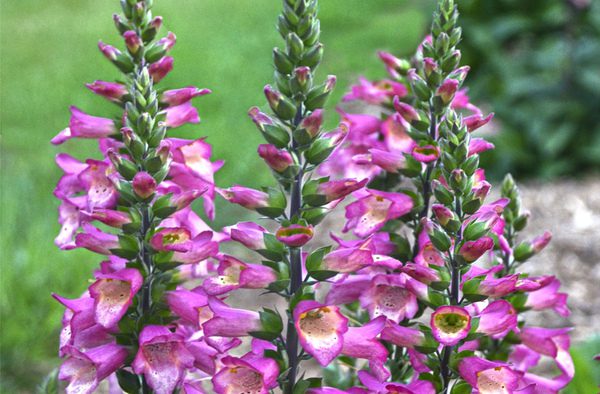
For the shady spots in the garden, digitalis (foxgloves) are the ideal solution. Traditional varieties, such as D. purpurea ‘Alba’ throw up flower stems to 1.5 metres in pure white as well as pink and purple varieties. Modern breeding, crossing the native foxglove with the Canary Island foxglove (Isoplexis spp.) has provided some stunning new flower colours – look out for Digiplexis ‘Illumination Raspberry’ and D. ‘Berry Canary’.


